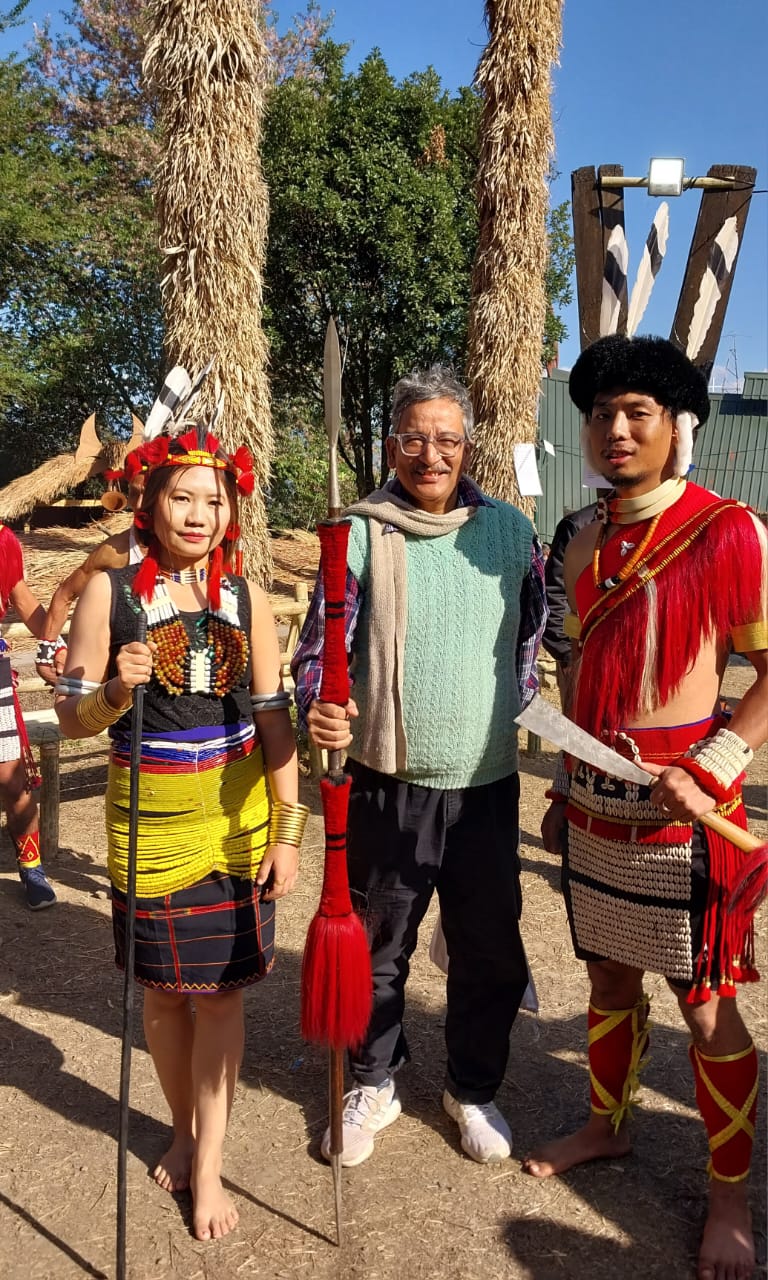
Kohima: A tribal festival in remote Nagaland making it on the global tourist map–this is the story of the Hornbill Festival.

Started in 1999 to get all the 16 tribes of the Northeastern state together, the 10-day festival from December 1 to 10 draws around two lakh tourists every year.

The Festival represents all tribes of Nagaland who display their houses, dances, costumes and cuisine. Bands, bikers and the scenic setting of the festival village have made the event a must-visit for tourists.
 It gets its name from the large bird associated in Naga culture with bravery and strength. Hence, its feathers are worn by warriors in their headgear. They even imitate its call. Naga war cries are an attraction of the Hornbill.
It gets its name from the large bird associated in Naga culture with bravery and strength. Hence, its feathers are worn by warriors in their headgear. They even imitate its call. Naga war cries are an attraction of the Hornbill.
 The Nagas are fiercely independent and after the departure of the British, the 16 major tribes who had their territories, languages, customs and cuisine refused to be a part of India.
The Nagas are fiercely independent and after the departure of the British, the 16 major tribes who had their territories, languages, customs and cuisine refused to be a part of India.
 It was only on December 1, 1963, that Nagaland state was formed. The initial aim of the Hornbill Festival was to integrate the tribes but over the years it has helped integrate it with India as well as the world.
It was only on December 1, 1963, that Nagaland state was formed. The initial aim of the Hornbill Festival was to integrate the tribes but over the years it has helped integrate it with India as well as the world.
 Today though Nagas look upon this festival with pride. Neiphiu Rio, the longest-serving CM of Nagaland, said that the festival had transcended its initial vision and had become a global showcase of Naga culture.
Today though Nagas look upon this festival with pride. Neiphiu Rio, the longest-serving CM of Nagaland, said that the festival had transcended its initial vision and had become a global showcase of Naga culture.
 In the 24th edition, the attendance crossed 33,000 in the first two days. It is such a draw that even the National Geographic channel has featured it. Maybe neighbouring Manipur can learn from Nagaland.
In the 24th edition, the attendance crossed 33,000 in the first two days. It is such a draw that even the National Geographic channel has featured it. Maybe neighbouring Manipur can learn from Nagaland.
Germany, Colombia and the USA, the three foreign partners of this year’s festival, have brought their cultural troupes and rock bands. US Ambassador Eric Garcetti, British High Commissioner Alex Ellis, Colombia Ambassador Victor Echeverri Jaramillo and German Consul General Barbara Voss said at the inaugural they were thrilled to see the vibrancy of tradition and culture of the Nagas.
The lifestyle and culture of the Naga tribes do resemble that of Red Indians. Garcetti welcomed the gathering with a Mexican greeting that came from his great-grandmother’s tribe.
The event is also popular among bikers for the Hornbill Festival Motorcycle Tour, a 14-day drive that includes the Hornbill Festival and covers the states of Assam, Nagaland, and Meghalaya.
*The writer is an independent journalist.









*We are overwhelmed by clicking on Phom Tribe lovers by an amateur photojournalist like you*.
Phom Tribe has immense pride in Naga Heritage Village at Kisama, preserved as its ethnic cultural heritage. Grand Phom Morung is adorned with carvings of great Hornbills, Elephants, Tigers , Primates, Mithun and a man in traditional attire. ( headgear adorned with Hornbill feathers and a spear)
Phom tribes originated from stones. They also believe that their incestors migrated to Mt. Yungnyu in Longleng district in Nagaland. *Phom name is derived from a beautiful lady named *Bhumla which means *Lady of the Clouds* Legend says that she and her husband had many offsprings and their descendants were called Phom. Phom area was mostly covered by clouds especially during winter.
Agriculture is their main occupation. They also engage in pottery, bamboo works and spinning.
Monyu is the most important festival of Phom tribes. It involves community feasting, dancing, singing and social works. *On New Year’s Festival occasion 1-6 April, the arrival of Monyu is announced by beating the long drum with a distinct tune synchronised.* A feature of this festival is the men folk showing respect to their married daughters and sisters by offering them food and rice beer. This custom reflects the high status of women in a Phom household.